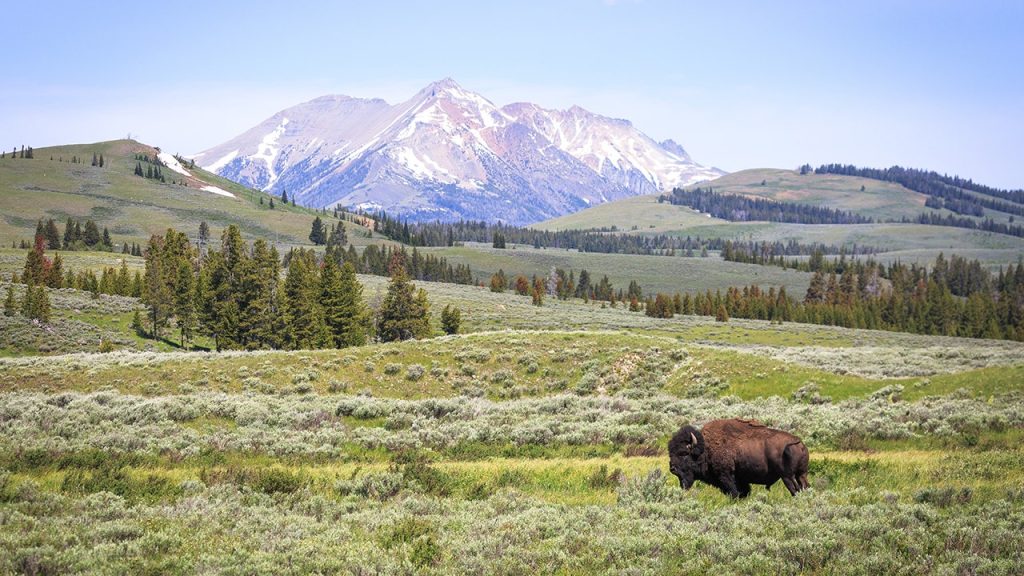National Park Week is a time to celebrate the wildlife in the Rocky Mountain West, with visitors coming from all over to see these American treasures. Jackson Hole EcoTour Adventures founder, Taylor Phillips, shared important information and tips for those looking to observe wildlife in the West. Visitors are advised to maintain a safe distance of 100 yards from predatory animals like bears, wolves, and mountain lions, and 25 yards from other wildlife to ensure safety for both humans and animals.
Bears are a common sight in the Rocky Mountain west, with encounters frequently happening while driving. Hikers in grizzly bear country are advised to travel in groups of four or more and carry bear spray. Moose, the largest member of the deer family, are known for their size and unpredictable nature. Visitors should be cautious of agitated moose, as they can charge at individuals or vehicles. Elk, known for their bugling during breeding season, can also be aggressive, especially towards vehicles, using their antlers to puncture car doors.
Wolves in the Yellowstone ecosystem are not considered dangerous to humans, and visitors are encouraged to observe these social animals using binoculars and lawn chairs. Bison, the largest free-ranging herd in North America, can often be seen in Yellowstone and Grand Teton, with the potential to pose road hazards due to their large herds. Mountain lions, although elusive and rarely seen, are a part of Wyoming’s predatory hierarchy. Lastly, rocky mountain big horn sheep are frequently spotted in the winter months, with their comfort around humans making them easy to observe.
The wildlife in Wyoming and the greater Yellowstone area offer visitors unique opportunities to view and interact with some of America’s most iconic species. Understanding the behavior and habits of these animals is essential to ensure a safe and enjoyable experience. Visitors are advised to maintain a safe distance, make noise to alert animals of their presence, and be aware of the potential dangers associated with encounters with wildlife.
Despite the allure of seeing these majestic creatures up close, visitors are reminded to respect the animals’ space and not to approach too closely, especially when females are protecting their young. By following these guidelines and being aware of the risks associated with encounters with predatory animals, visitors can safely enjoy the beauty and wonder of the Rocky Mountain West’s wildlife.
Jackson Hole, Wyoming, and the greater Yellowstone area are home to a diverse array of wildlife, including bears, moose, elk, wolves, bison, mountain lions, and rocky mountain big horn sheep. Each species plays a unique role in the ecosystem and offers visitors an opportunity to witness these animals in their natural habitats. National Park Week is a time to celebrate and appreciate the beauty and diversity of America’s parks and the wildlife that calls them home.
By following guidelines and tips provided by experts like Taylor Phillips, visitors can have a safe and memorable experience exploring the wildlife in the Rocky Mountain West. Whether observing grizzly bears from a safe distance or listening to the bugling of elk during breeding season, there are countless opportunities to connect with nature and appreciate the wonders of the natural world. National Park Week serves as a reminder of the importance of preserving and protecting these habitats and the animals that inhabit them for future generations to enjoy.


